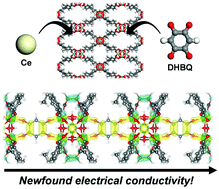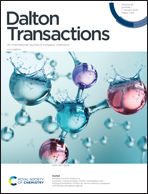Rational modifications of PCN-700 to induce electrical conductivity: a computational study†
Abstract
Recent research has shown that electrical conductivity can be observed in metal–organic frameworks (MOFs), which leads to many new application fields for these nanoporous materials. With a limited number of electrically conductive MOFs developed thus far, effective design strategies to induce electrical conductivity in these materials must be actively explored. In this computational study, we show that rational modifications of a previously insulating MOF, PCN-700, can lead to newfound electrical conductivity. In order to secure through-bond charge transport (CT) pathways in the framework, we consider the possibility of introducing electroactive DHBQ linkers via sequential linker installation. Then, metal substitution of Zr4+ with Ce4+ and saturation of DHBQ linkers at remaining linker vacant sites are additionally considered for the optimal matching of energy levels along the proposed CT pathway. The resulting linker saturated Ce-PCN-700-DHBQ is predicted to show semiconducting behavior with a bandgap of 2.09 eV, which can be further reduced by controlling the chemical environment. These computational results show that rational modifications of the framework can lead to electrical conductivity in previously insulating PCN-700, and highlight the importance of energy level matching in the design of electrically conductive MOFs.



 Please wait while we load your content...
Please wait while we load your content...